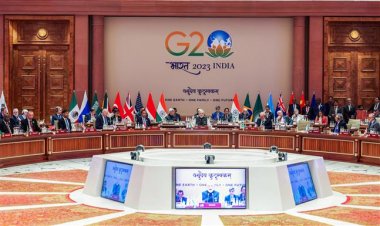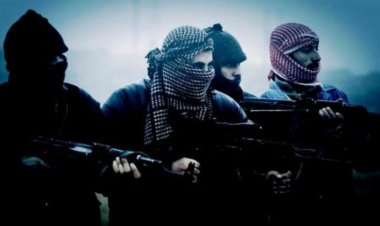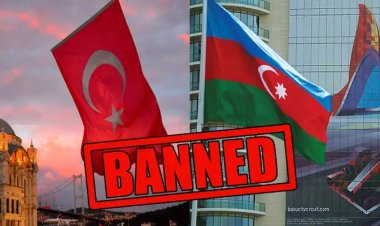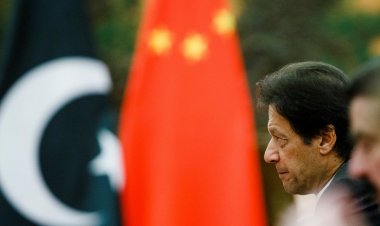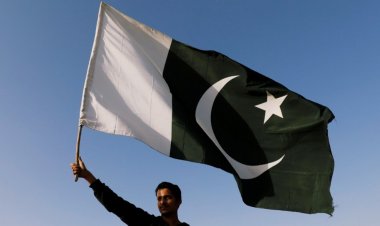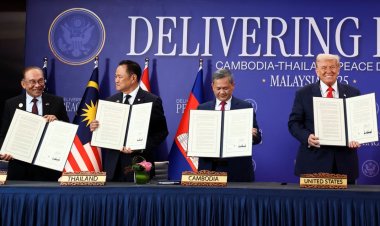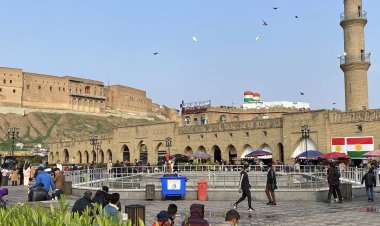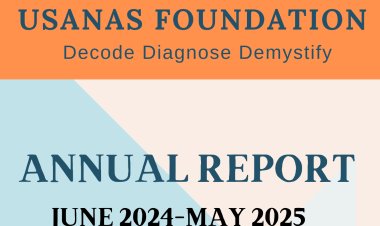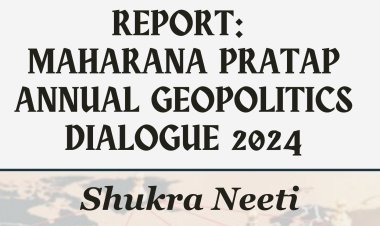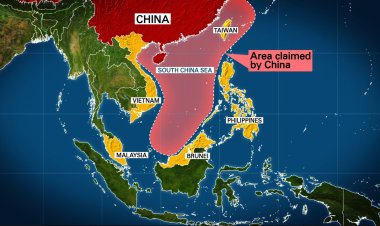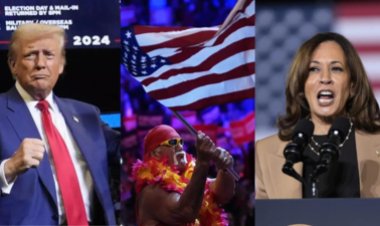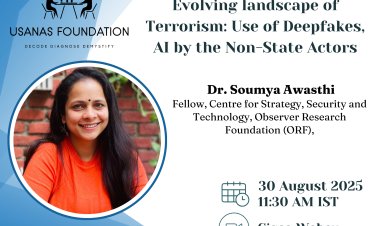Why the Khalistan Separatist Movement Is Neither Sikh Nor Liberal
The Khalistan movement not only adheres to the bigotry, extremism, patriarchy, and violence prevalent among the Jihadi terrorist groups but also has close ties with them in operational and strategic matters.
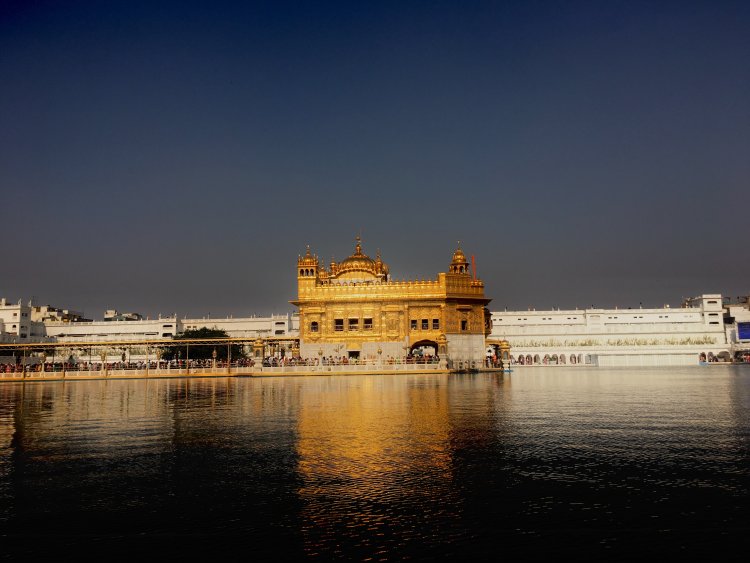
By Abhinav Pandya for The National Interest
India has long suffered from separatist movements, e.g., Nagaland and Mizoram in the northeast and Kashmir and Punjab in the northwest. Amongst them, Punjab's Khalistan insurgency was the bloodiest and most dangerous. Between 1980 and 2000, in the Khalistan insurgency, 11,694 civilians, 1,784 security forces, and 8,069 militants died. The Khalistan movement aimed at the creation of an independent state, namely Khalistan. Massively supported by Pakistan, it was Pakistani General Muhammad Zia-ul-Haq's strategy to bleed India through "a thousand cuts" to avenge the defeat of the 1971 war. The movement petered out by the early 1990s; however, lately, it has been on the upswing again.
What is the Khalistan Movement?
Indian Prime Minister Indira Gandhi's opportunistic electoral politics further paved the way for their rise. Finally, Operation Blue Star (1984), India's massive military crackdown on the Sikhs' holiest shrine, Golden Temple (Amritsar), to flush out holed-up Khalistani militants turned things bitter, hurting the religious sentiments of ordinary Sikhs. Besides, many innocent civilians, being used as shields by the militants, also died in the military operation. The resentment culminated in the assassination of Indira Gandhi by Khalistan militants. In the backlash, bloody riots gripped Delhi, with many congress leaders playing a lynchpin role. According to the official estimates, 2,733 persons, mostly Sikhs, were killed in the riots. With this carnage began the most violent and brutal phase of Khalistan terrorism.
Why Resurgence?
By the early 1990s, its most violent phase ended. It petered out in the mainland Punjab; however, it continued to survive in a fledgling state in the western countries among the Sikh diaspora communities. Many Khalistan leaders settled in Canada, the United States, and Western Europe and sustained the movement. Pakistan continued to support the Khalistan movement in the west. In 2007, Khalistan leader Gurpatwant Singh started the "Sikhs For Justice" (SFJ) forum to conduct "Referendum 2020" (a referendum among the global Sikh community by 2020 to decide upon the separate homeland). In mainland Punjab, since 2015, its terror activities are seeing a revival. After the removal of Kashmir's special status, Pakistan has intensified its activities to link Khalistan terrorism with Kashmir-centric terror groups especially, Jaish-e-Mohammad, the group responsible for the 2019 Pulwama attack, leading to the death of forty Indian soldiers and bringing India and Pakistan to the verge of war. The current disaffection among farmers due to state curtailing subsidies under the new agricultural reforms gives space to the Khalistan movement.
What is the Bigger Danger?
The Khalistan movement in its new avatar is even more dangerous because it is projecting an image of a secular and liberal movement of a Sikh minority fighting against India's oppressive Hindu majority for its right to self-determination. Further, the SFJ, by lending support to Kashmir separatism and some of India's populist civil rights movements with dubious ties to Islamist groups and Khalistani groups, is projecting an image of a civil rights movement with firm beliefs in Western liberal values. However, at its core, it continues to be a violent and extremist movement with no tolerance for liberal values like free speech, multiculturalism, democracy, and human rights.
This piece intends to debunk two powerful myths associated with Khalistan 2.0, giving it a degree of legitimacy among the religious Sikhs and the secular civil rights activists. The first myth is that the movement is rooted in Sikhism, fighting for its followers who are facing an existential threat from Hindu nationalism. The second myth is that the movement has firm faith in liberal values.
Sikhism's Umbilical Cord with Hinduism
Since its inception, Khalistan's key ideologues and leaders, and their Pakistani intelligence masterminds aimed to sever Sikhism's ties with Hinduism, model it on the lines of Abrahamic religions, and create a separate homeland on Pakistan's pattern. However, there cannot be a more blatant denial of Sikhism's roots as Sikhism is intertwined with the mainstream Indic traditions such as Hinduism, Buddhism, Jainism, and the liberal Sufi Islam.
The first Sikh master, Guru Nanak Dev, was one of the many Hindu saints who flourished in the Hindu Bhakti movement, which birthed as a Hindu resistance movement against the onslaught of fanatical Islamism manifesting in territorial acquisitions, forceful conversions, and temple demolitions (see History of Medieval India by Satish Chandra). He was from the Nirgun tradition of the Bhakti movement, which believed in the worship of a formless divinity viz. Brahman of the Vedantic and Upanishadic cosmology, for the ultimate goal of self-realization. Guru Granth Sahib is replete with several references to the Hindu chant of "Om." It says "Ek omkar satnam" (Omkar is the eternal truth). Monks of multiple faiths, castes, and sects have written verses in that. A few names include Kabir, Dhanna, Sen, Pipa (lower caste Hindu saints), and Miya Mir, a Sufi Muslim saint, clearly reflecting the multicultural and tolerant values of Sikhism as opposed to intolerance and militant persecution of non-Sikhs practiced by Khalistani terrorists.
Most of the Sikh gurus were born in Hindu Khatri trader families and worshipped Hindu deities like Rama, Krishna, and Kali. In the Khalsa fraternity, the militant Sikh group founded by the last master Guru Govind Singh, for Hindus, it was mandatory to devote one of their sons. Banda Bahadur, an accomplice of Guru Govind Singh, who established the first Sikh principality, was born in a Hindu Dogra Rajput caste.
Maharaja Ranjit Singh, the founder of the Sikh kingdom, had Hindu deities on his flag. The first Sikh kingdom of Maharaja Ranjit Singh was not a religious state based on bigotry and intolerance towards other communities. Maharaja Ranjit Singh was a secular man who employed people from all faiths, including the Muslims and all religions, in his army. The soldiers came from far-off places like Orissa, Uttar Pradesh, and Bihar. Hindus and Muslims served in high positions. He maintained Asia's second-best army trained by the French military officers (see History of the Sikhs (1469-1839) by Khushwant Singh).
The Khalistan movement is also a planned and deliberate attempt to delink Sikhs from their Hindu roots and unleash the process of modeling Sikhism on the pattern of political Islam. However, Sikhism has hardly anything in common with it. Initially, it was a spiritual movement. Guru Nanak Dev never intended to create a separate religious order. Unlike Islam, in Sikhism, there is no precedent of a religious state like Abu Bakr al-Baghdadi's caliphate or the Islamic Republic of Iran. Sikhism has no jurisprudence system to run the state and administrative affairs or an institution of Caliph to lead the Sikh religious order. There is no centralized church. Guru Govind Singh was the last guru; however, it was never stated that his word was God’s last word, as in Prophet Muhammad's case. Further, even the martial Khalsa tradition arrived in Sikhism by accident due to Mughal persecution.
The fanatic Mughal kings started persecuting Sikh gurus for their faith. Mughal King Jehangir executed Guru Arjun Dev (1606); Aurangzeb ordered Guru Teg Bahadur's beheading (1675) and the murder of Guru Govind Singh's two minor sons.
Besides, the fanatic Mughal kings were also persecuting Brahmins and forcibly converting them to Islam. Against the above-mentioned brutalities, and in particular, the persecution of Brahmins, Guru Govind Singh started the Khalsa sect, the militant wing, to fight the Mughal armies. As a result, Sikhism came to be known as the sword arm of Hinduism. Later, the Namdhari Sikh group started the first cow-protection movement in the 1870s. During the riots of 1947, also, along with Hindus, thousands of Sikhs were butchered by Muslim rioters in Pakistan, and they were forced to migrate to India. Even today, Hindus and Sikhs worship common deities like Vaishno Devi. Sikhs have fought against Pakistan in all the wars that India fought. Thus, Sikhs and Hindus have a long history of bonhomie and shared suffering at the hands of fanatical Islamist forces.
Today, when Khalistan leaders deny the brutal history of persecution of Sikhs at the hands of fanatical Islamist forces and seek Pakistan's help, they stand rootless, and as opportunistic bigots thriving on blood money. Aligning with the same ideological forces, which killed Sikh gurus, they stand exposed as traitors of the Sikh community.
Khalistan Represents Extremist and Illiberal Values
In 2019, it was revealed that JeM and Khalistani terrorists were operating hands-in-glove, smuggling weapons, narcotics, counterfeit currency, and ammunition into Indian territory (Punjab-Jammu border). JeM, a Jihadi terrorist group, represents those extremist values against which the Sikh gurus launched the militant Khalsa movement. Interestingly, Khalistani leaders prefer not to discuss the less-known history of Balakot (where India bombed JeM camps to avenge Pulwama), a place sacred to JeM for its Jihadi history, where the Sikh armies defeated and killed some of the firebrand Jihadists of early Wahabism in India.
In Pakistan, the Sikh minority lives in perpetual fear and threat of Jihadist groups and clerics. Maulana Khadim Hussain Rizwi, Pakistan's extremist Barelvi cleric, openly abused Sikhs and Maharaja Ranjit Singh, the founder of the Sikh kingdom. In 2019, a minor Sikh girl Jagjit Kaur, from Nankana Sahab, was kidnapped and converted to Islam. Following it, in 2020, came the conversion of Pritam, daughter of the Sikh Granthi of Gurudwara Panja Sahab. In March 2020, Islamic State in the Khorasan Province (IKSP) terrorists attacked a gurudwara in Kabul, killing twenty-seven innocent civilians. The accused, Aslam Farooqi, was of the former Lashkar cadre and was in touch with ISI handlers.
In Afghanistan, Pakistan's Taliban proxy massacred the thriving Sikh population of Nangarhar, Logan, Herat, Kabul, Kandahar, and Jalalabad, bringing it down from 220,000 in the 1980s to mere 1,350 Sikhs today. In the 1980s, Afghanistan had seventy Sikh shrines, and today not even a dozen are functioning. Such brutal persecution happened at the hands of none other than Taliban terrorists, the ISI's blue-eyed boys. Unfortunately, Khalistani leaders are always missing when it comes to condemning the above-mentioned atrocities, leave aside calling for any referendum or petition at a global level.
Neither did they condemn the brutal massacre of thirty-six Sikhs in Indian Kashmir by Pakistani-sponsored terrorist groups. Sikhs in Indian Kashmir face everyday threats and marginalization by Pak-supported terrorist groups like Jaish, Hizbul Mujahideen, and Lashkar. Jamaat-e-Islami, a radical and extremist organization that believes in Maududi’s vision of political Islam, dominates Indian Kashmiri state institutions and ensures that Sikhs are kept on the margins in academia, state administration, police, and politics. However, Khalistani leaders living in the comforts of the United States, United Kingdom, and Canada prefer to remain mute spectators to such horrors.
No Regard for Human Rights
The Khalistan movement has no respect for human rights, democracy, freedom of expression, and diversity. Operating from the hallowed precincts of human rights in the Western world, i.e., Canada, Sweden, the UK, Germany, and the United States, they use the freedom offered by liberal societies and state institutions to further their extremist agenda. However, Khalistani leaders never criticized the murder of hundreds of Hindus by Khalistani terrorists in Punjab in the 1980s. Khalistani terrorists committed some of the most horrendous massacres in India, such as shooting dead 102 train passengers in Ludhiyana (1991) in two different attacks, killing thirty-four train passengers in the RDX explosion in Bhatinda (1997) and twenty-seven employees of the Ropar-based Swaraj Tractor Company (1991). They abducted, molested, raped, and forcefully married thousands of young girls in Punjab, which led to the loss of local support and massive resentment against them.
Further, they prefer to raise human rights concerns in a very selective manner, i.e., only in the matters where it suits their political agenda. For example, they did not speak a word when ISI operatives murdered the Baloch activist Karima Baloch in Sweden. Likewise, they are also silent spectators when Kurds are murdered by Turkish forces; Uighurs and Tibetans are persecuted by China; Hindus, Christians, Shias, Sikhs, Pashtuns, and Qadiyani Muslims are killed by religious fanatics in Pakistan under the state's protective arm; and when locals in Baluchistan and Gilgit-Baltistan are displaced and murdered by Chinese and Pak armies. Interestingly, Khalistanis went a step ahead and also supported China in the recent India-China stand-off.
Khalistani leaders have refrained from speaking a word against the ISI's drug trafficking in Punjab, a grave human rights violation as it has ruined Punjab's youth. Moreover, the consumption of drugs is also the highest order of sin in Sikhism. In June 2019 alone, the customs department seized 532 kg of heroin worth 2,700 crores, or 27 billion rupees, which was being smuggled from Punjab via the Attari border. In 2018, with 11,654 cases (19 percent of the total cases registered in the country), Punjab recorded the second-highest cases registered under the Narcotic Drugs and Psychotropic Substances Act. The other cases of selective application of human rights concerns have already been discussed earlier in this essay.
Imitating Jihadi Terrorist Groups
It all began with the ISI's help with money and weapons in the Khalistan's militancy of the 1980s. Notorious Khalistan terrorists like Gurjit Singh Cheema, Ranjit Singh, Wadhwa Singh, Harmeet Singh, Lakhbir Singh Rode, and Gopal Singh Chawla are staying in Pakistan under the ISI's protection. Gopal Singh Chawla has often been seen with Hafiz Saed, the global UN-designated terrorist and the mastermind of the 2008 Mumbai bombings, which claimed the lives of 166 people.
The modus-operandi of Khalistan terrorists is also quite similar to Jihadist groups. When journalist Shujaat Bukhari spoke against militancy in Kashmir, Pakistani-supported terror groups killed him in 2018. Likewise, Khalistanis killed the journalist Tarsem Singh Purewal in 1994 for exposing Khalistan's terror financing modules, and in 1998 the anti-Khalistan editor of Indo-Canadian Times was assassinated. Years before JeM hijacked Indian airliner IC-814 in 1999, Khalistani terrorists exploded Indian airliner Kanishka in 1985, killing all 329 passengers and twenty-two crew members. Khalistan's siege of the Golden Temple in 1984 has its parallels in the Islamists' siege of Lal mosque in 2007 in Pakistan.
Italian journalist Francesca Marino found that Khalistanis were using Pakistani jihadist networks for money transfers. More evidence of their links with the ISI comes from the support expressed by Pakistan's Jamaat-e-Islami chief Ameer Siraj ul Haq, who expressed his support for a "free Kashmir and free Khalistan." It may be recalled that Jamaat-e-Islami is a furnace of jihadi terrorist groups like Hizbul Mujahideen in Jammu and Kashmir. More recently, the SFJ has merged Kashmir and Khalistan's campaigns as "Kashmir2Khalistan." In the SFJ's events, ISI-lobbyists like British Lord Nazir Ahmad and Pakistani embassy officials in Canada are frequently seen expressing support for their cause.
Borrowing from the Islamist Charities
The Khalistan movement has also borrowed tremendously in its modus operandi from the Islamist charities. Like Turkey and Pakistan projecting the Kashmir jihadist insurgency as a civil rights and a secular separatist movement, Khalistan leaders, through the SFJ, are also projecting themselves as a civil rights movement with liberal values fighting for the right to Sikh self-determination. The SFJ claims to be a civil rights movement and human rights advocacy group on the lines of Islamist groups like the Muslim American Society, the Kashmir American Council, and the Islamic Circle of North America, which maintain covert ties with Transnational Terrorist Groups like Al Qaeda, Hamas, Lashkar-e-Taiba, and Hizbul Mujahideen.
However, when it comes to the SFJ, the linkages are murkier. The intelligence sources reveal that Lt. Colonel Shahid Mehmood Malhi, better known as "Chaudhary Sahib" in the Pakistani military, is the brain behind Referendum 2020. Indian security services have recovered documents about Referendum 2020 from his computer. Moreover, the SFJ has also built robust ties with Erdogan's jihadist regime having deep-rooted ties with ISIS and jihadist elements in Syria and Libya.
Recently, the National Investigation Agency (NIA), India’s premier counter-terrorism agency, summoned a functionary of Khalsa Aid, the charity organization which has been helping the ongoing farmers' protests in India, investigating his links with the banned SFJ. In its recent investigation, the NIA found irrefutable evidence suggesting that a large number of funds are collected by Khalistan coordinators in the Western world and routed to India through NGOs to create disruption and disturbances. Earlier, in 2012, the NIA unearthed the KhalsaAid's links with a banned Khalistan terrorist organization, Babbar Khalsa International (BKI). Other Khalistan charities like Sikh Organisation for Prisoner Welfare, Akhand Kirtanee Jattha also received funding from the UK and Pakistan-based BKI operatives to orchestrate terror attacks in India.
To conclude, the Khalistan movement not only adheres to the bigotry, extremism, patriarchy, and violence prevalent among the Jihadi terrorist groups but also has close ties with them in operational and strategic matters. Hence, they are not just a grave threat to India's national security and an irritant in Indo-U.S. ties, but also an antithesis to the liberal and democratic societies of the Western world, where they have found safe-havens.
Abhinav Pandya is a founder and CEO of Usanas Foundation, an India-based geopolitical and security affairs think-tank, and the author of Radicalization in India: An Exploration. His second book, Terror Financing in Kashmir will be released soon. He is an MPA from Cornell University, USA. His work has featured in Economic Times, Fair Observer (USA), Haaretz (Israel), South Asia Democratic Forum (Brussels), The Print, HW News, Sunday Guardian, Quint, Vivekananda International Foundation, Policy Perspectives Foundation, Perspectives on Terrorism, Huffington Post (USA), Express Tribune (Pakistan), Pak Tea House (Pakistan), First Post and Swarajya. He also appears as a panelist on India's national TV debates on security and strategic affairs. He tweets @abhinavpandya.
Disclaimer: This article is the author's individual scholastic contribution and does not necessarily reflect the organisation's viewpoint.
This article was originally published in The National Interest

